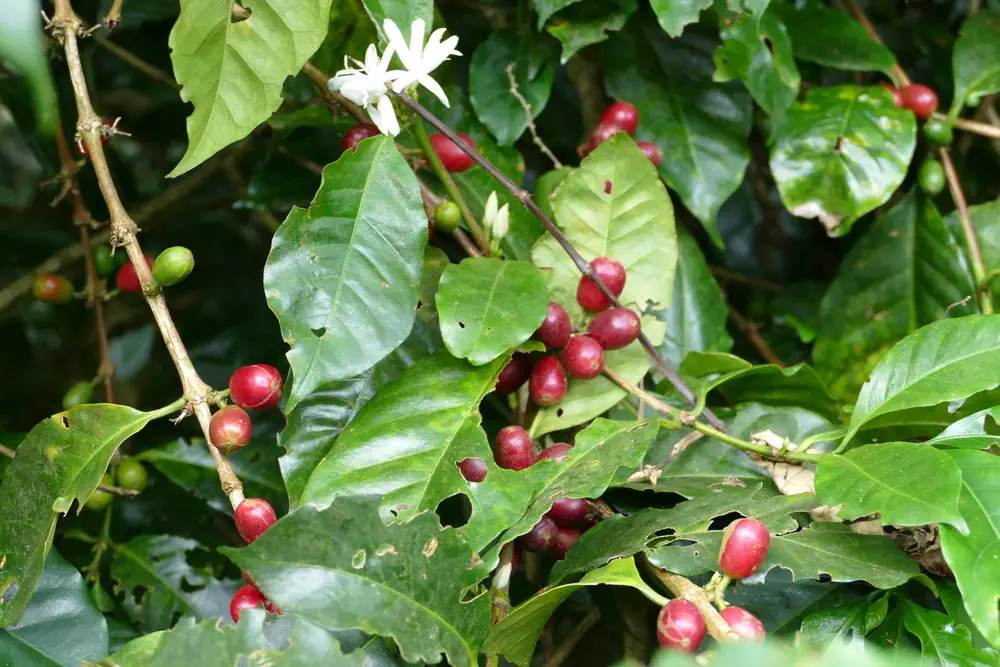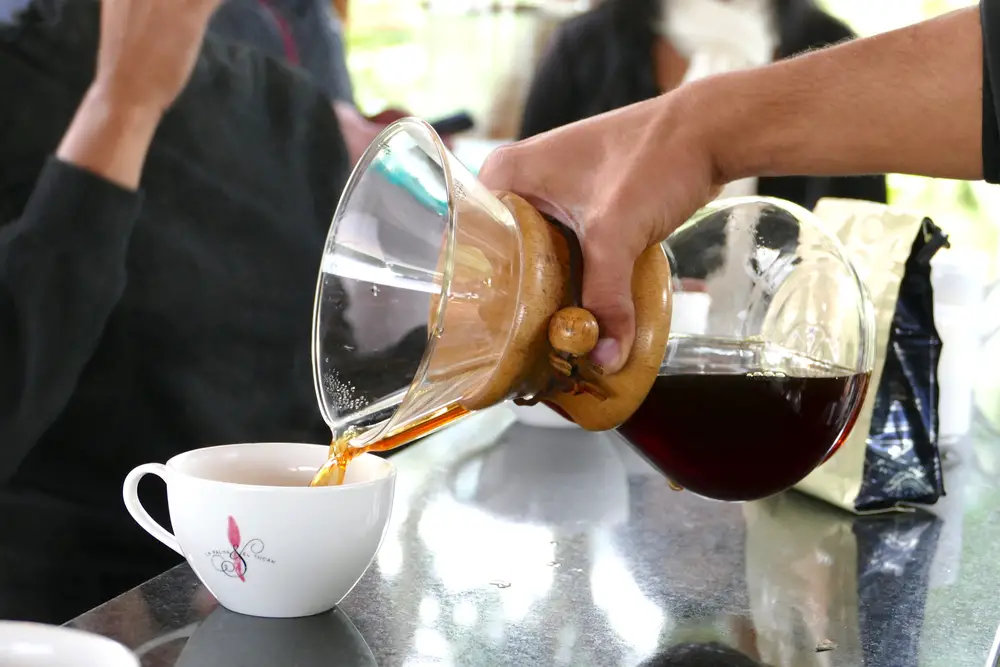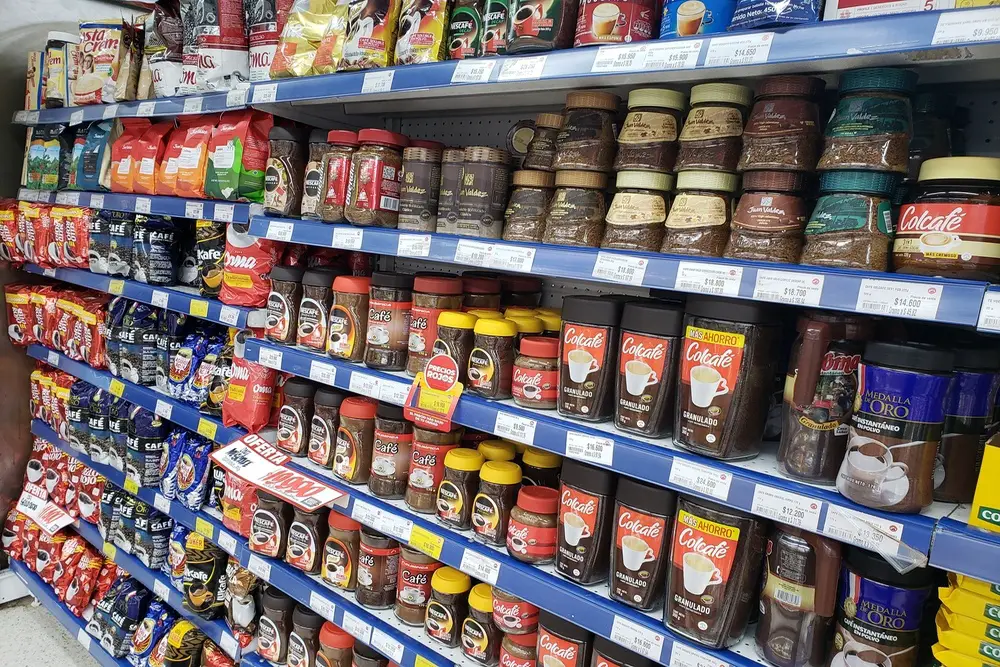Colombia is considered one of the best coffee countries in the world with a large catalog of varieties of coffee beans.
The Caturra variety Chiroso began its popularity in the Antioquia department of Colombia. This is thanks to the fact that she was the winner of the Carmen Montoya Cup of Excellence in 2014. By the way, the capital of this department is Medellin.
Table of Contents
The Discovery of Catura Chiroso
During the physical analysis of the samples for the annual competition “Cup of Antioquia Coffee Cup” revealed a very different coffee bean, pearl colored and oblong shaped. It also has a different character in the cup than other coffees and originates from the city of Urrao.
The coffee won first place in regional competitions and was awarded the Colombian National Cup of Excellence in 2014. Carmen Cecilia Montoya Patiño took part in this competition with the Chiroso coffee and won.
Glory to Chiroso
It is mentioned that Andrés Felipe Ruíz Márquez’s Chiroso coffee was promoted as part of a special coffee project by the Provincial Government of Antioquia. Carmen Coffee’s Chiroso was also highlighted at the 2017 SCA Barista Championship.
“In terms of morphology and behavior, I would say that the Caturra Chiroso is our geisha, the local Colombian geisha because they are very similar in some aspects. Be it the shape of the plant or the shape of the bean or even the behavior. The sensory level is very similar to that of the geisha because it is complex, with delicate aromas, and at the same time it is a very delicate coffee,” says Andrés Felipe.
In this sense, they emphasize that the Urrao producers have developed a Chiroso brewing protocol in which fermentation plays an essential role to obtain a differentiated cup.
The origin of the name Caturra Chiroso
The term chiroso refers to the shape of the coffee fruit, which resembles an achira (a traditional cake in some regions of Colombia). Edwin Chaverra, co-founder of coffee roasting company Salvatge, explains that the name comes from the word chiro, a Colombian term for a shirt that stretches, referring to the elongated shape of the coffee fruit.
Both refer to the characteristic shape of the coffee and the manufacturers eventually adopted the term Chiroso. Rodrigo emphasizes that Chiroso coffee is not a variety but a local name given by coffee farmers. As for the origin of the coffee, Felipe Henao reports on the results of a study carried out by Christophe Montañon, director of RD2 Vision.
RD2 Vision is a company that takes DNA samples from coffee plants and their cherries in order to gain a solid and in-depth knowledge of coffee species and varieties in order to make the right investments in coffee production.
Chiroso coffee is a landrace from Ethiopia, which claims to have nothing to do with Caturra. It is not a variation of the Caturra species, but an “Ethiopian landrace”.
RD2 Vision is a company that performs DNA fingerprinting from its range of services to provide a solid and informed understanding of breeds. Interestingly, very little is known about this strain outside of Ethiopia.
Catura Chiroso as a coffee specialty
Chiroso coffee is very easy to brew and its unique and varied cups suggest an exotic coffee. It’s also a nutritionally demanding coffee, as it needs to be harvested at least four times a year, but it more than makes up for this with its high productivity.
At the sensory level, it is a floral coffee with a sweetness reminiscent of a tart scent, with complexity, intensity and a lingering aftertaste.
For his part, Edwin spoke about his experience attending the SCA Barista Championships where he debated with the judges and said that his coffee features:
- A double acid: A combination of citrus and malic acid, resulting in a juicy acidity. This is due to the fermentation process that Carmen carries out in the factory.
- He also points out that the Chiroso ‘s potential lies in its fragrance. It is a complex roast coffee whose potential lies in the preparation using the filter method, not forgetting that it is also suitable for espresso preparation.
- It has small flowers and a distinct aroma with notes of melon, yellow fruits and peaches. When tasting this coffee bean, it is sweeter than other varieties and, in the organoleptic test according to the SCA protocol, the aroma of sweet coffee with notes of honey, red fruits and peach blossoms stands out.
- The aroma is more complex and is best appreciated when cold, with notes of citrus, citric acid, honey and chamomile sweetness brightening the cup like no other coffee. The body is not elongated but is very fine in structure and complex brown in color.
Catura Chiroso and its market value
The market prices show the potential of the Chiroso in Colombia. It has been shown that the price of this type of coffee ranges from 1200 to 1600 US dollars per load (125 kg), depending on the quality. Edwin compares the value of Chiroso with that of other types of coffee, noting that a cup of espresso costs an average of US$2.6 in Europe, while an espresso made from Chiroso costs between US$7 and US$9 per cup.
Challenges and Opportunities for Caturra Chiroso
- One of the challenges of growing this strain is the increased fertilization, which increases production costs and requires cultivation at an altitude of 1,950 to 2,200 meters above sea level. Because at low altitudes it is susceptible to rust and other diseases.
- Rainwater management must also be considered as this can lead to premature fruit loss which greatly affects the quality of the cup.
- It is clear that the Chiroso has many characteristics that place it in the specialty coffee segment or even exotic coffees, although there is little literature on its origins.
- Its organoleptic properties are an important potential for development and could offer commercial opportunities to small producers in the municipality of Urrao and other nearby places that have created the geographical conditions and protocols for adequate processing.
- Like so many things, this coffee has its own genetics that give it a special touch. Grown in the right conditions, and developing the right harvest and post-harvest techniques, will allow her to thrive when she’s in the cup.
Conclusion
In Colombia, coffee varieties are grown primarily to increase the profitability of coffee farms and coffee producers. The Caturo Chiroso is planted for its taste, which is beneficial when it comes to sales, because at the same time there are consumers willing to buy a specialty or premium coffee.



